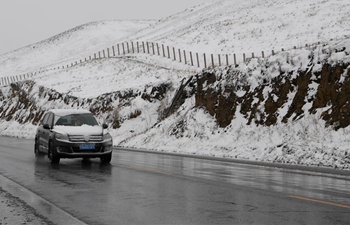CHICAGO, May 21 (Xinhua) -- Researchers at the University of Illinois (UI) said in a news release posted on UI's website Monday that they knew how to track and map drug and gene delivery vehicles to evaluate which are most effective at infiltrating cells and getting to their targets.
They combined two imaging tools to track and measure how different delivery agents entered human and mouse cancer cells. They used single-molecule imaging, which allows them to observe individual molecules over time, and quantum dots, which act like tiny beacons inside cells.
This allowed the researchers to see, count and track all of the delivery agents that entered the cell.
They found that molecules that are very charged are adept at getting inside cells but fail to reach their intended targets once inside.
"DNA is really charged, which is unfortunate, because that's one of the major things people are trying to deliver to cells," said study leader Andrew Smith, a professor of bioengineering at UI. "We see that it sticks to everything and doesn't get to its target."
However, molecules that are completely balanced in charge, a class called zwitterions, diffuse throughout the cell and can gain access to all of its machinery.
"It gives us some design rules for better ways to deliver genes and proteins to cells. We should avoid certain features and prioritize others, especially high-stability and zwitterionic surfaces," Smith said.
The study used "empty" delivery agents, those without therapeutic cargo attached. So the next step is to use the system to track the agents actually delivering drugs or genes and observe the mechanisms along each step of the drug delivery pathway.
"We are getting closer to solving the problem of cell delivery. This has been something that's limited medicine and gene therapy for a century," said Smith. "I think that the ability to track and analyze delivery in cells will be a huge boost to the pharmaceutical industry as it develops these types of therapeutics."
The findings have been published in the journal Nature Communications.

















